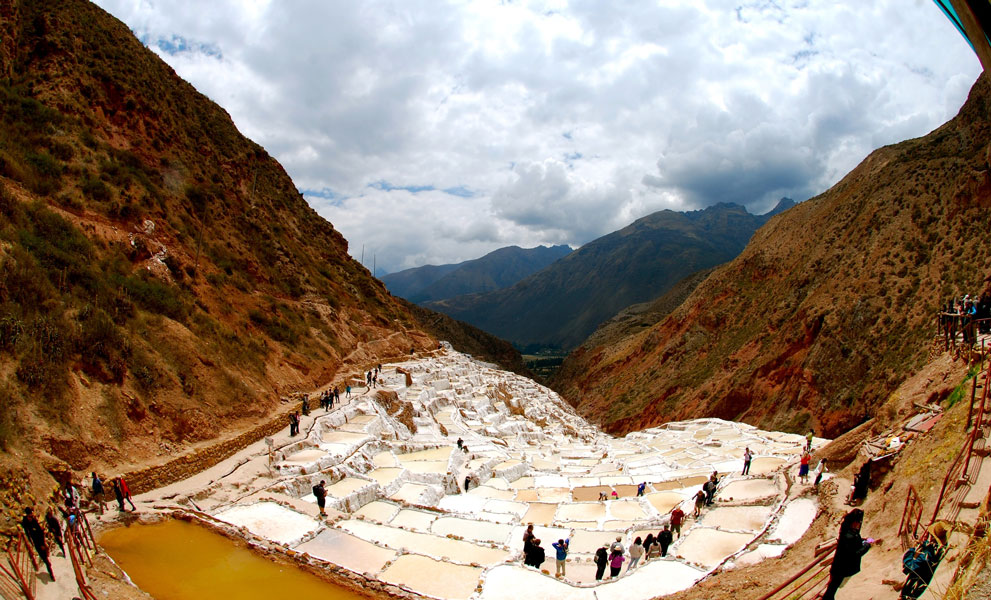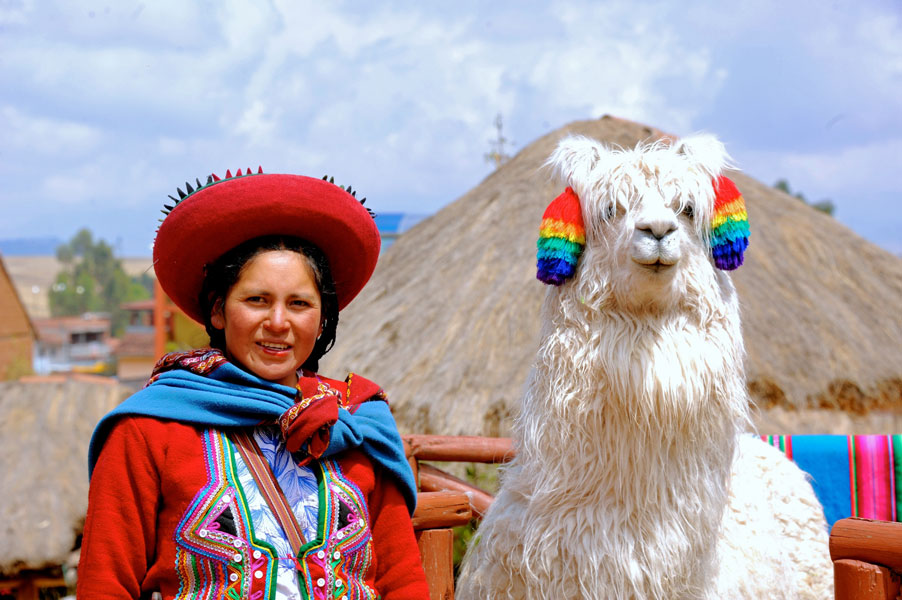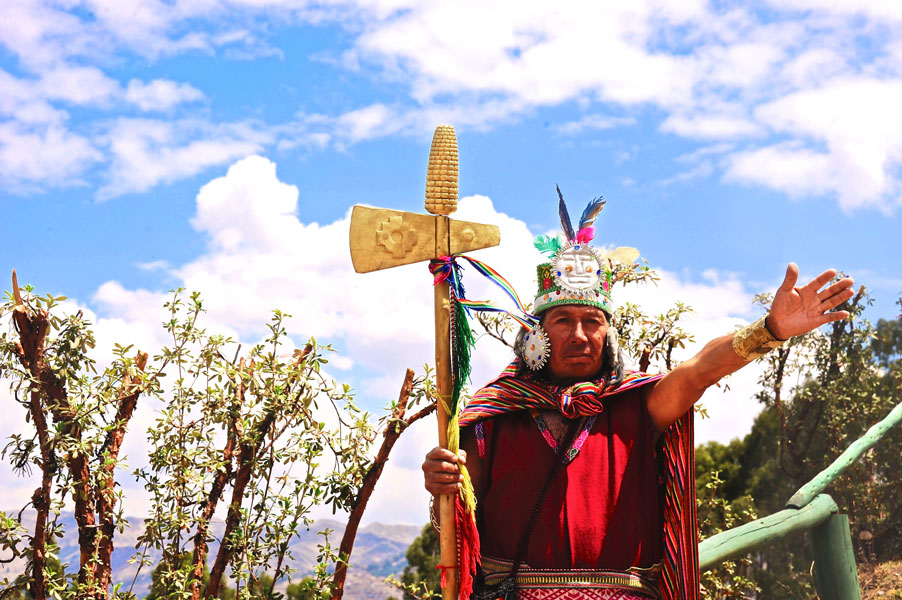Not often do I dress up for history. Prep myself like a pro. A bucket of sunscreen. A broad rimmed hat. Tonnes of air in my duff pair of lungs. A pair of rugged shoes. Hair tied in a tight bun. Sunglasses, umbrella, water in the pack. And a recap of all the Peruvian history learnt in school. If I had a doughty mule in tow, I would have beaten Hiram Bingham in his game. Bingham, the man who discovered Machu Picchu on July 24, 1911. Taking cue from a local muleteer, the intrepid American explorer discovered the Incan capital hidden under vines.


I am no Bingham. I had no pack of mules. No old maps. No tenacity, either. Instead, I rode Hiram Bingham. The swank Belmond train that runs from Cusco to the base of Machu Picchu, a UNESCO World Heritage Site, and one of the New Seven Wonders of the World. This is not a rickety train, it is snazzy — white-gloved servers pour merlots in long-stemmed wine glasses, the dishes are scrumptious, and the dessert dainty. Beyond the large windows lie endless tracts of cornfields and the Urubamba river meandering through the ancient terrain. While others were glugging merlot, I pulled out a few cocoa leaves. No, I had not turned a sheep yet. I was merely following the instructions of the wise — to beat high-altitude sickness, chew cocoa leaves. High? Machu Picchu is sky high. It is perched 7,970 ft above sea level. I also needed an extra slice of stamina to walk those 3,000 steps, not wanting to tumble down the mountain.
During Incan times, women with their mouth packed with saliva chewed corn kernels and spat them into a bowl, to create the yeast effect.
The crowd was milling at the base station of Machu Picchu. I edged, jostled, gingerly walked up the stone steps for that view. That view which has been on a billion postcards. The ruins of the citadel still sitting proud under the shadow of the mountains. An impressive five miles, with over 3,000 stone steps linking its many different levels. Nearly 200 buildings arranged on wide parallel terraces around a central square. Polished dry-stone walls of regular shape held together without an ounce of mortar. The nobles lived in a row of houses over the slope; the wise men in homes with reddish walls; the princesses’ quarters had trapezoid-shaped rooms. Standing precariously on a step, I gaped at spectacular masonry of the Incans. Machu Picchu takes one’s breath away. The cocoa leaves did not help. Not in the metaphorical loss of my breath.

In Peru, my clock was backtracking. Going as further back in time as it could. When it travelled back 4,000 years, I found myself in Lima’s Ralph Larco Herrera Museum where the prude will cover his eyes and morality-clingers will run to the exit. A private museum housed in an 18th century vice-royal building built over a 7th century pyramid, the museum has several galleries but its collection of erotic pottery is what brings the curious to its bougainvillea-laden yard. The Gallery of Erotic Pottery displays sex-themed pottery dating to pre-Columbian times. Anal sex. Female to male fellatio. Kissing and fondling. Male masturbation. Copulating frogs, mice, llamas. Sexual intercourse between females and mythical animals. All this moulded exquisitely in clay thousands of years ago and later dug out of the earth’s womb. Erotic vessels not as decorative pieces. Instead, functional hollow clay pots for holding liquid and a spout, typically in the form of a phallus, for pouring liquid. Such explicit sexual imagery in the world’s largest collection of erotic pottery.

Leaving behind libidinous skeletons, I hopped into a chopper for a spin over the Nazca Lines, a UNESCO World Heritage Site, housed between the towns of Nazca and Palpa on the Papas de Jumana (400 km south of Lima). After a long ride over the desert, the magic started unfolding. A large painted canvas appeared on the brown landscape. Colossal geometric lines. A gigantic pelican. A humming bird. A tree. Llamas. Jaguars. Monkeys. Humans. Large motifs that seem scratched on earth with a deft artist. Believed to have been created between 500 BC and 500 AD, the Nazca Lines are composed of more than 10,000 lines, some as wide as 30 metres and 9-km long, comprising nearly 300 different figures including hundreds of geoglyphs (geometric lines), zoomorphic designs of animals and birds, and a few phytomorphic motifs such as trees and flowers. These are not tiny lines scratched hurriedly. Here, a condor is 440 ft, a spider 150 ft, a hummingbird 310 ft. I stuck my nose to the chopper window, gaping at a canvas so colossal and an ancient art so riveting.

Twenty-four different shades of red can be derived from a squished cochineal. A drop of lemon juice makes the red lighter.
I drove though the ancient salt ponds of Maras and heard tales of how during Incan times, women with their mouth packed with saliva chewed corn kernels and spat them into a bowl. Who needed yeast if there was a mouthful of saliva? The saliva fermented chicha, a corn drink, the ancestor of yeast-fermented alcohol. I did not want to leave Peru without trying to be an Incan. At least a little Incan. At Chinchero Weaving Centre, I picked the Incan tricks from a young Quechua girl. Wash the hair with yucca roots. Freeze dry potatoes that could stay fresh for two decades. Rear alpacas for their meat and wool. Eat toasted white corn as snack. Crush the cochineal for the perfect red dye. Twenty-four different shades of red can be derived from a squished cochineal. A drop of lemon juice makes the red lighter. A dash of alum lends a hint of pink. Boil purple corn to dye yarn into purple. Yellow flowers for yellow. Powdered earth for orange.
Did you know?
- In Peru, it is tradition to give friends and family yellow underpants on New Year’s eve.
- Measuring 3,860 ft from base to summit, Cerro Blanco located in the Sechura Desert (near the Nazca Lines) is the world’s highest sand dune.
- The only Quechua word to make it into the English dictionary is charqui (dried llama meat), which became ‘jerky’.
Getting Corn-y

In Peru, getting corny is as easy as counting up to 60. In this South American country, corny is not being trite or mawkishly sentimental as the dictionary defines it. Here, corn-y is about nearly 60 varieties of Peruvian corn. Not the ordinary, everywhere yellow corn. Corn in a riot of colours — purple, black, orange, white, red, mixed. Corn used to dye wool. Corn boiled, steamed, toasted. Corn cooked as a snack, a drink, a meal. Kernels milled to bake cake and bread. Peruvians have been growing corn since 1,200 BC. At the heart of Peru’s corn call is choclo, an Andean corn with extra-large, bulbous kernels almost five times bigger than North American corn. The Incans (mid-15th to mid-16th centuries) widely toasted this corn. Called Cancha, it is the ancestor of the modern popcorn.





